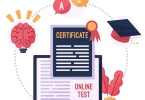Learning a new language is often a challenging journey, requiring a combination of creativity and effective strategies. Visual elements are among the most powerful tools for making language acquisition both engaging and effective. Whether through images, videos, or colorful tools like flashcards, visuals help learners connect abstract words to real-world meanings. From classrooms to home study spaces, incorporating visual elements can speed up comprehension and retention.

Table of Contents
The Importance of Visuals in Language Learning
Visual aids significantly enhance the learning process by creating strong sensory and contextual connections. Research shows that the brain processes visuals 60,000 times faster than text, and learners retain 65% of information paired with visuals compared to just 10% from text alone. This is particularly important for language learners, as visuals provide clues that help contextualize unfamiliar words.
For example, associating the word “tree” with an image of a tree bridges the gap between the written word and its meaning. This combination allows learners to recall the term more effectively during conversations or writing. Additionally, visuals can make learning more inclusive by catering to different learning styles, particularly for those who struggle with traditional text-based methods.
Types of Visual Tools That Support Learning
Visual elements come in many forms, each offering unique benefits for language learners. Some of the most effective tools include:
- Flashcards: Combining text and images, flashcards are excellent for building vocabulary.
- Infographics: Presenting complex grammar rules or vocabulary themes in a structured, colorful layout simplifies understanding.
- Videos: Platforms like YouTube and language apps use animations and videos to make lessons engaging and interactive.
- Everyday Objects and Signs: Visual exposure to real-world items, like labels and street signs, helps learners practice in authentic contexts.
- Interactive Apps: Many educational apps incorporate gamification and visuals to motivate learners.
Each of these tools allows learners to interact with the target language in a memorable and enjoyable way.
Practical Ways to Use Visuals in Learning
Incorporating visuals into your daily language practice doesn’t have to be complicated. Here are some practical suggestions:
- Build a Visual Vocabulary Board: Use flashcards or posters to create a dedicated space for practicing words and phrases.
- Watch Videos with Subtitles: Pair visuals with text to reinforce both listening and reading comprehension.
- Label Your Environment: Place labels on everyday objects in your home, such as “chair,” “mirror,” or “refrigerator.”
- Leverage Digital Tools: Apps like Duolingo and Babbel incorporate visuals, making lessons feel more like games.
- Explore Public Spaces: Pay attention to street signs, advertisements, and labels for practical, real-world vocabulary.
Neon Signs as Functional Décor and Learning Aids
While many tools are designed specifically for language learning, others, like neon signs, serve dual purposes. Neon signs, often associated with stylish décor, can help learners practice vocabulary and phrases in a creative way. For example, a sign reading “Hello” or “Dream Big” serves as a constant reminder of commonly used English words or motivational phrases.
Beyond their aesthetic appeal, neon signs provide passive exposure to language. Placing one in a study area or classroom encourages learners to internalize phrases through frequent visual interaction. Although not a traditional learning tool, neon signs add vibrancy to the environment and make learning more dynamic. Explore options for customizable neon phrases at Neon Signs Now.
The Effectiveness of Visual Learning in Practice
The integration of visuals has transformed how languages are taught and learned worldwide. For example, popular apps like Duolingo, used by over 500 million people, rely heavily on visuals such as icons, color-coded lessons, and animations. This approach keeps learners engaged while enhancing their ability to recall information.
In classrooms, teachers use charts, images, and videos to teach vocabulary and grammar. For instance, many ESL (English as a Second Language) programs use images of objects, actions, or scenes to help students connect words to their meanings. These visual aids help break language barriers, particularly for beginners.
Why Visuals Make Learning Enjoyable
One of the biggest challenges in language learning is maintaining motivation. Visuals create a sense of playfulness and curiosity, transforming study sessions into enjoyable experiences. For example, watching a short animation or engaging with colorful infographics is far more stimulating than reading a dry grammar textbook.
Moreover, visuals enhance confidence. Seeing words in context—whether on labels, street signs, or neon signs—reinforces their practical usage. This frequent exposure reduces hesitation and builds familiarity, making learners more comfortable applying the language in real-world situations.
Conclusion
Visual elements are indispensable tools for language learning, offering a fun and effective way to improve comprehension, retention, and confidence. From flashcards and videos to real-world objects and décor, visuals bring language to life by providing context and sensory connections. By incorporating visual aids into your routine, you can make your language-learning journey both productive and enjoyable.




